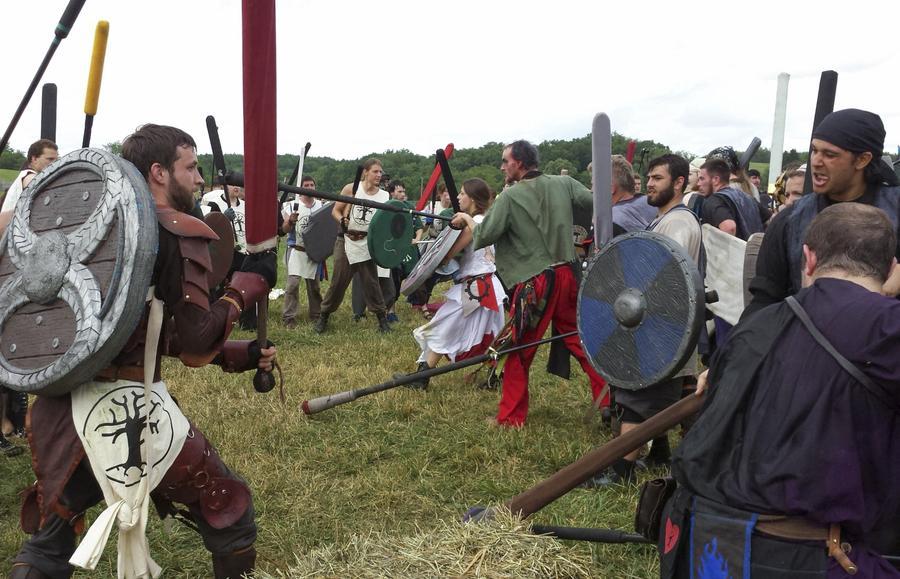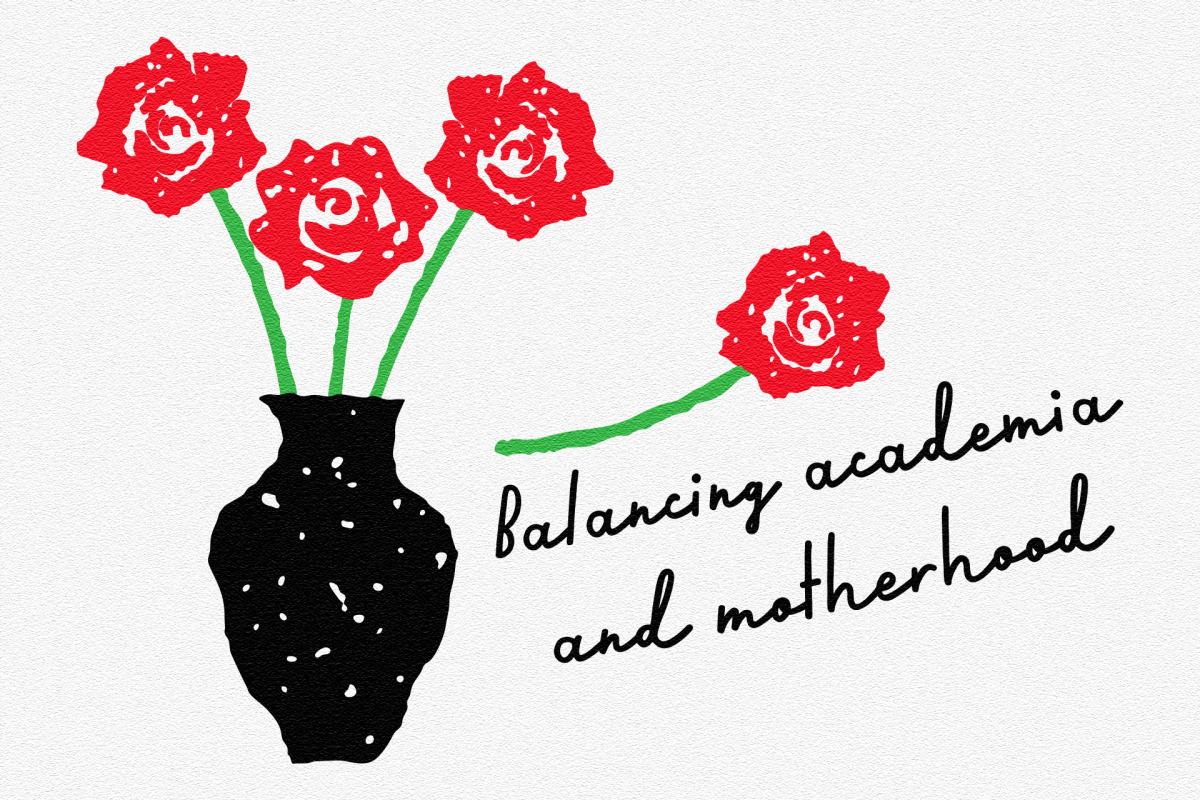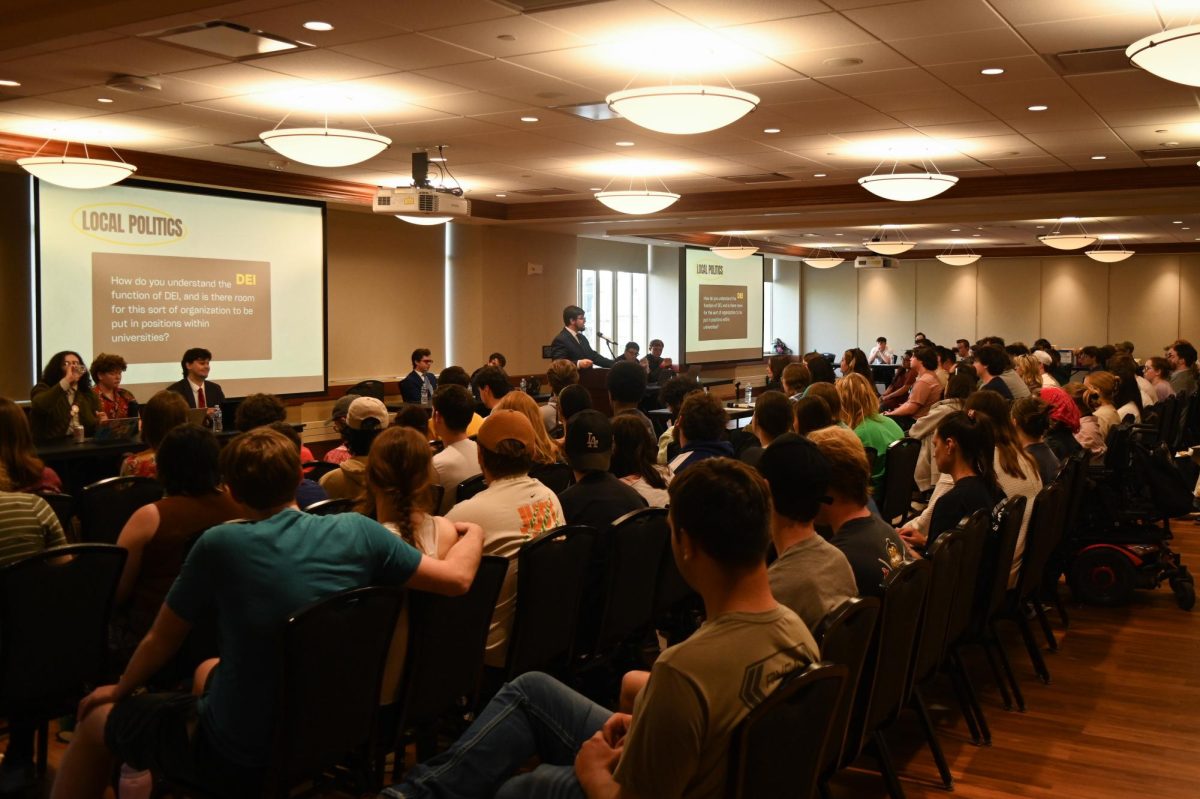Take a little bit of “Lord of the Rings” with a dash of “Game of Thrones” and Dagorhir, a modern game of Medieval combat, is born.
Inspired by J. R. R. Tolkien’s works, Bryan Weise invented the game in 1979, and members of Dagorhir continue to play across the nation in traditional attire, equipped with replicas of weapons from the Middle Ages.
Stephen Rawlings owns the contract for the Columbia chapter of Dagorhir, called Stonewater Marches. This chapter holds practices every Sunday during the winter at noon in Peace Park. During the summer, it meets every Sunday at 2 p.m. and every Wednesday at 6 p.m. in the park.
As a self-proclaimed history buff and a fiction writer on the side, Rawlings started playing the game in 2007 when the woman who is now his wife introduced him to it.
“She went to the college a few weeks before I did and met the guys doing it, and she thought I would like to do it too,” he said. “I was a freshman in college and I was trying to make friends. Initially, it was a way to meet new people and try to get my own little group going.”
However, it wasn’t until Rawlings went to an event in Holden, Missouri that he realized he would be practicing Dagorhir to this day.
“I went to a couple practices before then and was kind of into it, but once you go and immerse yourself in the culture, you just gotta keep doing it,” he said.
There are a few straightforward rules for Dagorhir. To avoid injury, all weapons must be padded. That being said, a player loses a limb if that limb is hit. If a player is hit in the torso or loses two limbs, that player is considered dead.
This isn’t LARP, or Live Action Role Play, though. Unlike Dagorhir, LARP is driven by a story and includes elements like classes, hit points and magic.
Dagorhir is battle-gaming, Rawlings said. The game is focused on the martial aspect of the fighting — swordplay, tactics and battle formations.
Rawlings said he also learned that fighting was just one aspect of the game. In fact, Rawlings’ wife prefers to craft tunics and armor, rather than fight, he said.
“Once I really got involved in the group and found out that there’s a lot more than just the fighting — and I love fighting — but there’s also the crafting and going to the Renaissance fairs and going to the marketplaces and the trading posts, on top of the martial aspect,” he said. “Really, there’s nothing about the game that I don’t like.”
Due to its many facets, Rawlings said he believes that anyone can jump into the game.
“You don’t have to be a certain type of person to come out and do it,” he said. “There is something in this game for everyone. Even if you don’t want to be a fighter, even if you don’t want to swing a sword, there’s still plenty of craftsmanship and apprenticing.”
Jessi Hynes began to play Dagorhir about a month ago, after her friends heard about the game and contacted Rawlings about joining the chapter. Hynes said she considers Rawlings a great teacher who has helped her acquire a set of weapons and is teaching her how to fight.
“Of course, I love the fighting, too,” Hynes said. “I think my favorite part is immersing yourself in the time period with the swords and castles and princesses. It’s also a great way to let off steam by hitting guys with foam swords.”
Hynes also said that anyone can join Dagorhir, no matter your gender or size.
“It’s not just a boys’ thing,” Hynes said. “Girls can benefit from this, too. I’m five foot, and all the guys are around six foot, but I hold myself pretty well.”
Each person who enters the game must invent a game name. The name can be mundane or elaborate and complete with a backstory, Rawlings said.
Rawlings’ developed both his game name, Fayne, and his costume from his fiction writings.
“Everything that I’m wearing took about two years to get together,” he said. “It’s a combination of stuff that I made, bought, and that I modified. It’s not easy to get an advanced costume together.”
While Hynes is still working on her backstory, she already has developed her game name and the bones of her character, Botey, who was born into an imperial town but kidnapped by Vikings.
In total, there are around 30 members in the chapter, but the number fluctuates based on the season. Depending on the members and the weather, practices consist of focusing on techniques and drilling and playing games like capture the flag and a variation of ultimate Frisbee with javelins.
The chapter also attends tournaments.
“Everyone’s trying to get together on this day, have a grill, play a bunch of field games, and at the end of the day, we’ll have a couple of tournaments,” Rawlings said. “We don’t really focus on the winner of the tournaments. Typically, winners don’t even get anything, maybe a round of applause.”
In addition to tournaments, Stonewater Marches also attends Ragnarok, the “Super Bowl of Dagorhir.” Held at Cooper’s Lake Campground in Pennsylvania, Ragnarok is a weeklong event of fighting and comradery.
Although Rawlings said he appreciates the techniques of fighting in Dagorhir, he has learned much more than just how to hold a sword.
“In running this group, I found out how to motivate somebody to want to be part of a group rather than forcing regulations,” Rawlings said. “So, really, that carries over to my professional life.”
For Rawlings, Dagorhir is more than just a game. He said that you have to have a little bit of nerdiness to run around in a costume and fight on the weekends, but this game is how he has met his closest friends and has given him a creative and active outlet.
“It’s a great way to engender life and relationships, because you’ll be playing with your friends until one of you is too old to do it,” Rawlings said.






